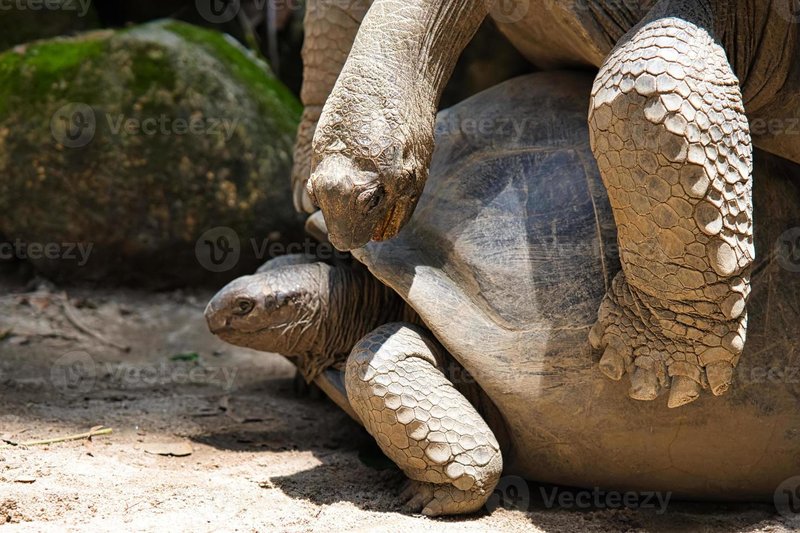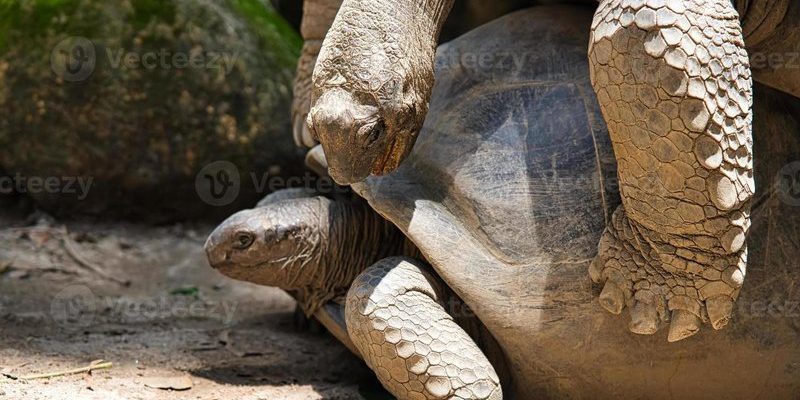
These tortoises are like nature’s timekeepers, moving through life at a leisurely pace yet perfectly in sync with their environment. If you’ve ever wondered how these magnificent creatures reproduce and raise their young, stick around. We’ll dive into their mating dance, egg-laying habits, and the many ways they ensure their species thrives.
The Breeding Season: Timing is Everything
Breeding for the Aldabra giant tortoise typically happens during the warmer months, between April and November. This syncs up with the rainy season, which provides the lush vegetation needed for the tortoises to thrive. You might be wondering, “Why does the timing matter?” Well, it all comes down to survival. The more food around, the stronger the tortoises and their hatchlings will be.
During breeding season, male tortoises can become quite vocal, engaging in a series of low grunts and bellows to attract females. It’s a display that provides a good glimpse into their personality. Picture a shy guy at a dance, trying to muster the courage to ask someone for a spin. The male tortoises will also engage in pushing and jostling to assert dominance. It’s like a slow-motion wrestling match, where the stakes are high but with no rush to finish.
The Courtship Ritual
Once a male catches the attention of a female, the courtship ritual begins. This can last several days, and it’s not a straightforward affair. Males will follow females around, displaying their size and strength while making elaborate sounds. It’s kind of like a serenade, only much slower and with a lot more shell!
You might picture that one persistent friend who won’t give up on impressing someone. The male makes sure to stay close to the female, gently nudging her to show his interest. If she’s receptive, they’ll engage in mating, which can last for several hours. Yes, you read that right—hours! This slow and steady approach isn’t just for show; it allows them to ensure a successful mating without the stress of rushing.
Egg Laying: The Nesting Process
After a successful mating, the female will prepare to lay her eggs. But here’s the catch: she doesn’t just drop them anywhere. No, the female tortoise will search for a suitable nesting site, which is crucial for the survival of her young. Usually, she’ll dig a hole in sandy soil, where she can lay anywhere between 10 to 30 eggs.
Picture her carefully selecting a spot, resembling a meticulous gardener planning out where to plant seeds. Once she’s found the perfect place, she’ll dig a deep nest, laying her eggs and covering them up with sand afterward. This instinctive behavior helps protect the eggs from predators and the elements, just like a parent tucking their child in for the night.
The Incubation Period
The incubation period for Aldabra giant tortoise eggs typically lasts around 60 to 90 days. During this time, the mother isn’t sitting on the eggs like a bird might. Instead, she leaves them to incubate in the warm sand. The temperature can significantly influence the sex of the hatchlings. Warmer temperatures generally lead to more female hatchlings, while cooler temperatures favor males.
Here’s the thing: this natural temperature regulation means the species can adapt over time based on environmental changes. It’s a brilliant survival strategy!
Hatching and Survival Strategies
When the time comes for the eggs to hatch, it’s a process that unfolds slowly. The hatchlings will use a special egg tooth to break through their shells. Once they’re out, they’re on their own, and here’s the kicker: their survival instincts kick in immediately. They head toward the nearest vegetation, where they can start munching on leaves to gain strength.
But it’s not all sunshine and rainbows. The little ones face numerous predators, including birds, crabs, and even larger tortoises. It’s almost like an epic coming-of-age story, where each hatchling must navigate its path in a world full of challenges.
Parental Care: A Hands-Off Approach
Unlike some animal species, Aldabra giant tortoises don’t exhibit parental care after the eggs hatch. Once the babies emerge, it’s every tortoise for itself. This might seem harsh, but it’s just how nature works. The mother’s job was to lay the eggs and give her offspring the best chance of survival by choosing a good nesting site. From there, the hatchlings must rely on their instincts.
While this might seem daunting, many hatchlings will find safety in numbers. As they grow, they’ll learn the ropes of their environment, eventually reaching the impressive size and strength that characterizes adult tortoises.
Conservation and the Future of Aldabra Giant Tortoises
With all this fascinating reproductive behavior, it’s important to consider the future of the Aldabra giant tortoise. Currently, they are classified as vulnerable due to habitat loss and introduced predators. Conservation efforts are underway to protect their habitats and ensure their breeding success.
Education plays a critical role here. By raising awareness about their unique reproductive habits and the challenges they face, we can encourage further protection and research. It’s a community effort, much like a team working together to solve a puzzle—each piece matters in understanding how to best protect these amazing creatures.
How You Can Help
Here are a few ways you can support Aldabra giant tortoise conservation:
- Support wildlife conservation organizations focused on protecting their habitats.
- Educate others about the importance of these tortoises and their role in the ecosystem.
- Visit reputable sanctuaries or reserves that prioritize tortoise care and education.
Every little bit helps in the grand scheme of things.
The breeding and reproductive behavior of the Aldabra giant tortoise opens up a window into a remarkable world. From their slow yet deliberate courtship rituals to the incredible journey of their hatchlings, these tortoises remind us of the delicate balance in nature. Each aspect of their reproductive process is finely tuned to ensure their survival.
As you reflect on these fascinating creatures, remember that every action we take to protect them counts. Whether it’s sharing knowledge, supporting conservation efforts, or simply marveling at their existence, you contribute to a brighter future for the Aldabra giant tortoise. Isn’t that a beautiful thought?

